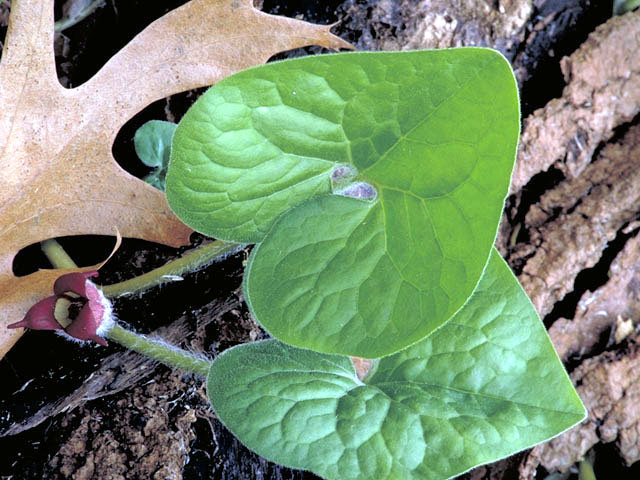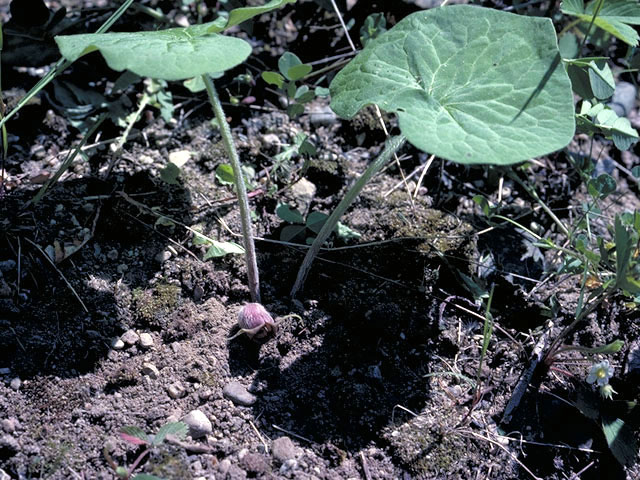Beware: Wild Ginger Territory!
Asarum canadense was first discovered in eastern Canada by Carl Von Linneaus (1707-1778) in the 1700's, which is how its species name originated. Linneaus never actually stepped foot in Canada, but was brought specimens to identify. It can now be found as far south as South Carolina and as west as Oklahoma, as indicated by the distribution map.
To learn more about the life of Carl Von Linneaus visit PlantExplorers.com
This species prospers in the
natural woodlands under the shade of a
deciduous canopy, such as maple, basswood, and oak. It can also
be found growing in valley s,
the base of bluffs, and ravines. All of these environments allow
for the perfect growing conditions for Asarum canadense because
of the vast amount of shade and very rich, moist soil. The soil
is usually organic with a pH level of 5.0-7.5. You may
even find this wild ginger growing in the shade of your own
home! If you live in an area that is home to Asarum
canadense, go on a search and see if you can find it
growing in its natural habitat. Be sure to keep your eyes open,
because it grows very low to the ground. Some other
organisms you may come across on your journey that live in the
same habitat are:
s,
the base of bluffs, and ravines. All of these environments allow
for the perfect growing conditions for Asarum canadense because
of the vast amount of shade and very rich, moist soil. The soil
is usually organic with a pH level of 5.0-7.5. You may
even find this wild ginger growing in the shade of your own
home! If you live in an area that is home to Asarum
canadense, go on a search and see if you can find it
growing in its natural habitat. Be sure to keep your eyes open,
because it grows very low to the ground. Some other
organisms you may come across on your journey that live in the
same habitat are:
-
Ixodes scapularis, deer tick
-
Anopheles earlei, mosquito
-
Pinus virginiana, Virginia pine
Interested in growing this plant in your own backyard? If you answered yes then I have great news for you: Asarum canadense is easy to grow and can be used as a great groundcover. It is an excellent plant for indoor or courttyard gardens and requires little maintenence because it is drought resistant. To find out more information and gardeners' comments visit Dave's Garden.

